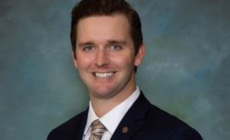-
Dodgers Reportedly Calling On Twins Relievers As Deadline Looms - 21 mins ago
-
Kamala Harris Will Not Run for California Governor in 2026 - 22 mins ago
-
Kamala Harris says she is not running for California governor - 43 mins ago
-
Red Sox Reportedly Eyeing Trade For Pair Of Diamondbacks Pitchers - 57 mins ago
-
Virginia City Councilman Is Set on Fire in Attack, Police Say - about 1 hour ago
-
Feds arrest ex-NBA star Gilbert Arenas for ‘high-stakes illegal poker’ - about 1 hour ago
-
Braves’ Chris Sale Could Be Out for Season After Unfortunate Update - 2 hours ago
-
Park Avenue Killer Bought Rifle for $1,400 From His Casino Boss - 2 hours ago
-
Jhoan Duran Trade Sweepstakes Gaining Steam As Deadline Nears - 2 hours ago
-
Canada’s Measles Cases Surpass U.S., Alberta Officials Push for State of Emergency - 3 hours ago
California’s top prosecutor floats path to boost Democrats in Congress
California Atty. Gen. Rob Bonta said Tuesday that he believes there is a “legal pathway” for Democrats to present new congressional district maps directly to voters on a statewide ballot, without input from the state’s independent redistricting commission.
Such a move, he suggested, would allow the state to counter Republican efforts to tilt next year’s midterm election by pushing redistricting measures that favor the GOP in conservative states such as Texas. If successful, Republicans would have a better chance of holding their slim majority in the U.S. House of Representatives and protecting President Trump’s ability to enact his agenda.
“I think the governor could call a special election that the voters of the state of California would participate in, and present to them a pathway forward that’s different than the independent redistricting commission, that has maps presented to them ready [and] tangible and specific, and then the people vote,” Bonta said, adding that his staff had been discussing the matter with Gov. Gavin Newsom’s team.
Republicans, who probably would lose seats if such a ballot measure was approved, were dubious of Bonta’s claim and argued that it is harmful to democracy. GOP Assembly Leader James Gallagher criticized Bonta’s proposal as a “strange legal theory to undermine CA voters.”
“It’s undemocratic, it’s wrong, and it needs to be stopped,” Gallagher said in a social media post Tuesday evening. “If they move forward in this fashion they will rip the state and this nation apart.”
Bonta provided few details about a potential ballot measure aside from saying that new district boundaries could be drawn by the state Legislature and presented to voters in a special election. The measure would ask voters to rescind the power they granted to an independent redistricting commission, at least temporarily.
Presenting maps directly to voters is viewed as an effort to sway Californians who may be leery of letting the Legislature redraw the districts after they vote, according to redistricting experts.
The governor’s office declined to say whether Newsom intends to ask the Legislature to put a map of the proposed districts on the ballot. His team said it is continuing to explore the two pathways he previously outlined — either having state lawmakers redraw the maps, which probably would face legal challenges, or placing the matter on the statewide ballot for California voters to decide.
Redistricting — the esoteric process of redrawing political boundaries — typically occurs once a decade, after the U.S. Census tallies population shifts across the nation. But it’s in the news because Trump — potentially facing the loss of the slim GOP majority in the House — urged Texas to redraw its congressional districts middecade to elect more Republicans in the 2026 midterm election so he can press his agenda during his final two years in office.
California lawmakers, like those in most states, used to gerrymander political boundaries to favor political parties and protect incumbents, often leading to bizarrely shaped districts with voters who sometimes had little in common. But in 2010, voters overwhelmingly passed a ballot measure to create an independent redistricting commission that focused on drawing congressional districts that consolidated communities of interest, respected minority voting rights and geographically made sense.
The state Republican and Democratic parties opposed the effort because it eroded their power. Now, after the Trump administration is urging GOP states to redraw district lines in a manner that would shore up their party’s control of Congress, Democrats are fighting back. In California, a partisan redrawing of the districts could net their party a half-dozen seats in the state’s 52-member delegation, which currently has nine Republicans.
Several steps would have to occur before any such potential change could be presented to the electorate, notably that the Legislature would have to approve placing the matter before voters in a special election and draw new maps in a compressed schedule. Legal challenges are likely.
“Generally, when the people vote on something, if it’s going to be changed in a significant way and not have additional steps taken by the Legislature in furtherance of what the people voted for, then the people need to vote for that change,” Bonta said, after being asked about the matter during a news conference. His office was working to “have confidence and assurance that there is a legal pathway for California to take action in response to any action that Texas takes. … We want to be confident that it was done lawfully originally, and that we can defend it appropriately in court.”
Source link



















